.png.transform/rendition-xs/image_image%20(1).png)
Pamplona for foodies, beyond San Fermín
Every year Pamplona takes center stage in international press during San Fermín. The week begins on July 6th, and it is packed with festivities including the running of the bulls, passionate bullfighting and the inescapable memories of the fame that Ernest Hemingway and his books brought to the Navarran capital. But what goes on in Navarre the other 51 weeks of the year? Let us tell you: Michelin star restaurants, surprising pintxos, a devotion to the foods and wines of Navarre, food markets bustling with life, limitless green areas, a perfectly preserved medieval historic district, and a surprise for art lovers: the most fascinating (and unknown) Gothic cathedral in Spain. By the way, have you ever seen a cathedral's medieval kitchen? Pamplona will show it to you
1. The breakfast of kings
We’ve reached Pamplona in the mood to enjoy breakfast, lunch and dinner like kings and, if there’s still room, to fill our suitcases with the flavors of Navarre. We start first thing in the morning with the most classic and festive Spanish breakfast: churros, that wonderful dough made of flour, water and sugar; and fried in olive oil. The first of three establishments: the mythical churrería on calle Mañueta, in the historic district (at the same place since 1872, but currently only open on the last two Saturdays in June, the week of San Fermín in July and all four Sundays in October). The rest of the year, people can head to Pamplona’s other two veteran churrerías: La Churrería de Lerín on calle Estafeta and Rotxapeta on calle Marcelo Celayeta. If you're more in the mood for freshly baked bread and artisanal pastries, the place to go is Horno Artesano on the plaza (square) del Vínculo. Another suggestion for good coffee, delicious pastries and a tranquil spot to read the newspaper or cultural magazines: Café Niza, located under the Teatro Gayarre, with its views of the plaza del Castillo.
2. Thirst for art in Pamplona
Pamplona boasts several not-to-miss visits for art and history aficionados. One of them is the city's Romanesque and Gothic cathedral, sheltered (and hidden) behind its nineteenth century neoclassical facade. Upon crossing the portico, visitors come face to face with a majestic, elegant, and balanced cathedral, marked by its Gothic style. Pay special attention to its cloister, refectory and medieval kitchen, singular in Europe. What’s more, Pamplona’s cathedral houses a permanent exposition called Occidens, which explains the history and values of western civilization through the archeological finds unearthed in surrounding areas, and features works of art from different towns in Navarre.
Another equally interesting option is to discover the artistic treasures at the Museo de Navarra, located on the cuesta de Santo Domingo (where the famous running of the bulls begins during San Fermín). The museum’s collection includes the Abauntz map (the earliest known map in Europe, a limestone block that dates back to around 9,816 BC); the Mozarabic chest from Leire, Romanesque capitals from Pamplona’s cathedral, and the portrait of the Marqués de San Adrián painted by Francisco de Goya. If you are drawn more to modern art, make your way to the Museo de la Universidad de Navarre, with its pieces by Picasso, Rothko, Kandinsky, Tàpies and Chillida, among others; or the Fundación-Museo de Jorge Oteiza, one of the creators and masters of twentieth century sculpture.
3. The aperitivo hour
People from Pamplona have two fixed dates with the world of pintxos, one at midday (the aperitivo hour, before lunch) and another in the evening. After imbuing ourselves with the culture of Pamplona, our stomachs need something to nosh on. Our suggestions: the Gilda XXL (a pintxo comprised of an anchovy, Gordal olive and pickled pepper) at Bar Mô (calle Espoz y Mina, 11), the tortilla de patata pintxo at the bar La Navarra (calle Amaya, 10), and the thinly sliced panceta pintxo and the ajoarriero (desalted cod with boiled potato) at the elegant La Barra del Goloso bar (calle San Ignacio, 8). Whet your palate with a glass of fragrant rosado from Navarre made with Garnacha grapes, a Chardonnay also from Denomination of Origin Navarra, or a local craft beer.
4. A relaxing lunch, with Michelin seal of approval
Navarre, which neighbors Basque Country and shares a border with France, has managed to attract the attention of the severe inspectors from the Michelin Guide. Two Pamplona restaurants have been awarded Michelin stars: Rodero, with the great Spanish chef Koldo Rodero; and Europa, at the hand of Pilar Idoate. These establishments embody the fusion of haute cuisine, each chef's signature style and top-quality products from Navarre.
5. Green Pamplona
The evening hours are the ideal time to discover Pamplona’s green areas on foot. The walk begins at the intimate and quiet little plaza de San José (don’t forget to stop by the antique store), next to the cathedral, and continues on the paseo del Rendín, the most medieval corner of the city. Here, a path begins leading along the city wall, with its views of the leafy Arga River. More options: the Taconera Park and, of course, the Ciudadela de Pamplona, an eighteenth-century defensive fort that has been turned into a massive park area. An interesting fact: the Navarran capital has the most urban green areas of any city in Spain.
6. Food and wine shopping
At this point on your trip you will have tried Navarre’s most prestigious foods, including its vegetable preserves (PGI Espárrago de Navarra, PGI Piquillo de Lodosa, PGI Alcachofa de Tudela, cardoon, borage, peppers), artisanal cheeses (PDO Roncal, PDO Idiazabal, Urzaiz, Urbasa, Roncesvalles), famous chistorra (a type of thin chorizo that is fried), legumes and sweets (chocolate, rosquillas, coffee candies, and the traditional txantxigorri, a torta made with pork lard).
If you want to enjoy these flavors at home, fill your suitcase with gastronomic souvenirs at Gur Gur (calle Estafeta), where owner Natxo Ainzua is an encyclopedia of Navarre’s pantry. Other spots include Torrens (a traditional grocery store on calle San Miguel), Txirrinta on calle Calceteros and the Murillo wine store (calle San Miguel), where advice about DO Navarra wines flows freely. If you prefer to see where the people of Pamplona do their daily food shopping, make sure to stop by the city’s municipal markets, such as Santo Domingo or the Ensanche.
7. To dine, signature pintxos
The pamploneses like to go out for pintxos. They almost consider it a sport. Much of the city’s social life revolves around a pintxo and a glass of wine. It's been a while since Pamplona has cast a sidelong glance at Bilbao, San Sebastián and Vitoria; proudly assuming its place as a mecca of miniature cuisine. The idea is to go from one bar to the next, sampling the specialties: Café-Bar Gaucho (spinach and shrimp crujiente, smoked eel with tomato, Per Sé sturgeon from Navarre in two textures, morcilla bonbon), Fitero (eggplant with Spanish ham, wild mushrooms and fritada; cod and vegetable tempura), Baserri (pintxo of squid with onions and roasted peppers), Café Roch (fried peppers), and the not-to-be-missed bar at La Cocina de Álex Múgica, where one can sample the creations of the area’s biggest proponent of creativity applied to the world of pintxos (sardine can with txangurro; Piquillo pepper stuffed with cod, with pomegranate and pickled peppers; pork papada with puree of garbanzos and raw berza...)
8. The final touch: a cocktail with pacharán
If there’s one liqueur intimately linked to Navarre it's pacharán (anisette, sugar and sloe berries). It even has its own quality seal. Pacharán is typically enjoyed over ice, after a meal, but there are also professional mixologists who are daring to innovate with this liqueur. One of them is Íñigo Cochero, the bartender at El Pasaje de la Jacoba. Make your way to his bar in the center of Pamplona's historic district and ask for a recommendation. This is the perfect way to say goodbye to this city, which offers much more than one week a year of running with the bulls.
We’ve reached Pamplona in the mood to enjoy breakfast, lunch and dinner like kings and, if there’s still room, to fill our suitcases with the flavors of Navarre. We start first thing in the morning with the most classic and festive Spanish breakfast: churros, that wonderful dough made of flour, water and sugar; and fried in olive oil
Rodrigo García/©ICEX
Translation: Adrienne Smith/©ICEX
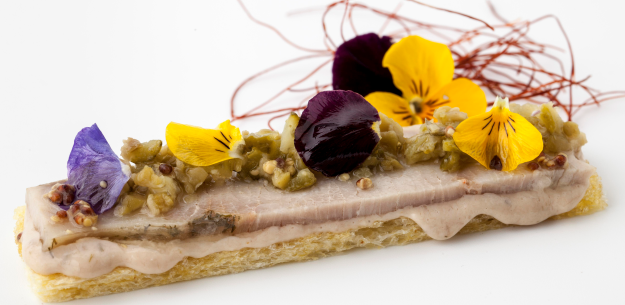
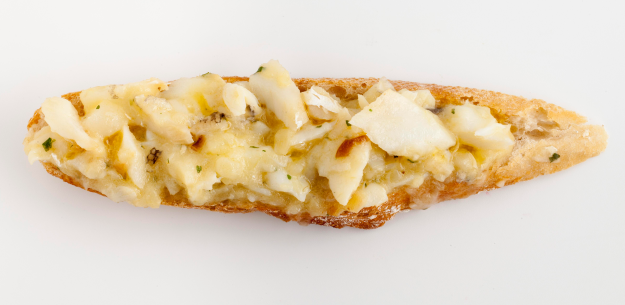
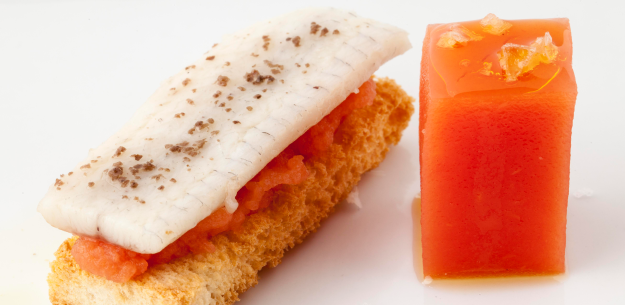
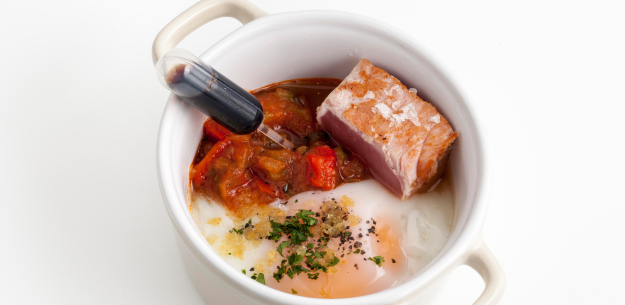
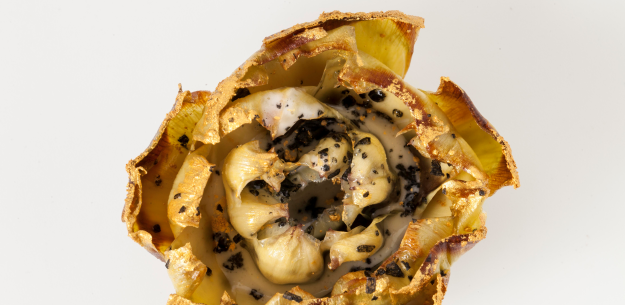
- Image1
- Image2
- Image3
- Image4
- Image5


